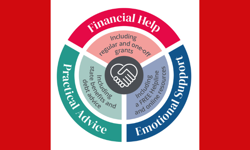There has been a lot of discussion recently around subscriptions and data in the app environment. Ensuring that the migration to digital sales will grow sales and profitability doesn’t just mean developing great content apps; it also requires the right customer relationship model for digitally delivered magazine content.
The Big Question
Is the opportunity along the lines of the traditional subscription relationship with customers - as per the classic acquisition, retention, up-sell, cross-sell, reactivation model, or is it about a retail relationship, as per the traditional newsstand model?
For a publisher like BBC Magazines, where subscriptions are at the heart of publishing strategy, delivering growth of 83% in the last five years, this is a very pertinent question. With almost one million subscribers, whose relationships BBC Magazines has fostered and developed, there is a clear benefit to carefully managing the move to digital in order to retain control of customer relationships.
But of course, this isn’t just a question for individual publishers, but one for the whole industry.
Points to Consider
Customers have a very different retail experience in the app world compared to the retail experience for print magazines.
There are challenges around getting standout in the App Store, gaining consumer attention, and encouraging trial, as well as repeat purchase. However, techniques are there to gain the advantage; for example, gaining promotion with Apple / promoting new apps to get chart listings.
Print magazines have a regular publishing cycle and encourage repeat purchase / new purchase on the newsstand through promoting specific issues. The model adopted by many publishers of creating a free to download app, which then houses free sample content, as well as all downloaded issues, requires the customer to remember to return to the app for new issues. This can be a challenge without the standout that print copies have through being in a physical retail environment.
That said, we know that consumers are downloading magazines and reading them, although not on a comparable scale with print issues yet.
Publishers need to grow their sales and reach new markets, but part of the means to do this is to drive frequency of purchase and cross purchase at individual customer level.
Driving repeat purchase and longer term commitment is an art that subscription marketing teams have mastered over many years.
This makes subscriptions, with repeat purchase inherent from the start, very attractive to publishers.
The question is how to make this work, given the well publicised questions over who owns the customer relationship and the importance of data in the traditional subscription marketing model.
There are a number of nuances of this challenge. It is highly likely that the digital magazine subscription marketing and management approach of the future will be a hybrid model, melding subscription marketing techniques and digital marketing techniques around publishers’ and third parties’ online shopping platforms – with Apple being the head runner at present.
Subscription Marketing Tools and Techniques
There are a number of tools and marketing skills that drive success:
* Testing offers, creative, timing, format and different channels
* Using channel analysis and ROI modelling to optimise profit
* Locking in subscribers through continuous payment methods (Direct Debit and continuous credit card)
* Growing digital marketing and online ordering
* Cross-sell and up-sell (across the industry, portfolio campaigns will bring in hundreds of thousands of new subscribers each year)
Data and analysis are at the heart of marketing planning and strategy.
Digital Marketing Techniques
Using an analytics package to track customer behaviour is invaluable in monitoring what is and what isn’t working. Things to look at include:
* Where customers are being referred from (for example: direct URL, brand sites, Google or other search engines, affiliate marketing, banner campaigns)
* Bounce and conversion rates for different referral segments
* Multi-variate testing
* Repeat visits
* Drop off rates for each stage of the click thru journey to the final sale
* Permission types and levels for further contact
Retail Marketing Techniques
For publishers marketing content through iTunes, there are clear parallels with some of the management techniques for newsstand marketing, albeit without the physical distribution challenges.
* Getting the range of titles listed in store in the first instance
* Working with retailers around promotional opportunities
* Getting magazines on display in prominent positions
Database Marketing Techniques
A traditional single customer view database is a valuable asset, allowing businesses to understand and segment their customer base, to deliver additional cross-sell and up-sell opportunities as well as maximise retention.
It gives an opportunity to profile the existing base and identify characteristics that can be used to refine prospect activity to maximise return from cold activity.
Traditionally, a single customer view database for consumer publishers has a wide variety of data sources. BBC Magazines’ Arrow database comprises active and lapsed subscriber details, voucher redeemers, reader offer responders, competition entrants, live event attendees, email newsletter registrants, reader panel members and merchandise buyers.
The single customer view can identify best prospects for direct mail and email campaigns as well as inform a multi-dimensional renewal series segmentation based on the depth of the customer’s relationship with the brand (and sister brands), price sensitivity and payment method preference.
However, digital interactions provide a wealth of additional data, which, subject to consumer permissions and third parties passing on data, can tell marketers so much more about consumer behaviours than ever before. For example, usage patterns, number of repeat reads, dwell time on particular content, clicking on advertising content.
With the number of interactions exponentially multiplied, finding, interpreting and acting on patterns in the data will become more challenging than ever before, but also should be even more rewarding.
Customer Service Elements
If customers have already bought print magazines, should they have to pay again to download digital content? Making customers pay twice seems a pretty obvious route to customer dissatisfaction. Looking at magazines where readers effectively paid twice, many expressed their dissatisfaction by giving the apps a poor rating, directly affecting future sales and chart ranking.
Given that most customers have this reasonable expectation that they shouldn’t have to pay twice, particularly if they have made the commitment of taking out a subscription, the better option for many publishers will be giving print subscribers free access as a benefit of being a paid subscriber, or to upgrade subscribers to premium pricing packages.
Assuming that customers will enjoy the choice of accessing content via the two media, it maintains yield and minimises the risk around customers trading down to digital only. It also creates increased customer satisfaction and promotes continued commitment / loyalty.
BBC Magazines has given all subscribers to Good Food magazine access to the digital edition free of charge, as, although the app is very much an enhanced digital experience, with features including how to cook video footage, and optimised recipe displays, content is integrally related to the print magazine.
Five star rated subscriber comments include:
“Brilliant app. I am a subscriber but now the paper copies can be recycled and I still have all the wonderful recipes at my fingertips. Fabulous.”
“As a magazine subscriber I am over the moon that we get the electronic version free of charge.”
Marketing and Fulfilment Demands
Linking marketing and fulfilment is essential in the app environment. An integrated marketing campaign across print and online encouraged Good Food print subscribers to register for access to Good Food digital editions, linking back into either the App Store or the downloaded free app. This gives subscribers access to the digital edition free of charge.
An API funnels real-time information to Dovetail, our fulfilment bureau, whose system instantly confirms whether or not the user details are valid. Content is then unlocked. Restrictions on the number of device IDs that can successfully be used per username prevent content going viral and being accessed free of charge by non-subscribers. This required some technical development at Dovetail, but the functionality is now easy to replicate.
Who Owns the Data?
In this new world, publishers will continue to be able to operate a wholly owned subscription journey fulfilled in the same way as print subscriptions and using the same infrastructure, where they are able to distribute content across multiple digital platforms. But inevitably, as third parties such as Apple offer credible routes to very significant new markets, publishers will want to sell and deliver content bought and fulfilled via these third parties.
Here, alongside commercial considerations, there is a challenge around getting data to feed into existing single customer view databases.
Even on the Apple platform, publishers can get customer sign ups. Incentivised registration can take the form of access to special offers, competitions, or exclusive content. Or publishers can offer an initial free subscription period, in exchange for data. This will give access to data such as email, name and postcode.
Data is also available via analytics packages, such as Google Analytics, embedded into apps. This gives insight into behaviours around the user experience, dwell times, click thrus, repeat visits etc.
Understanding the conversion funnel (ie. how many customers download a free app, or buy a single issue, how many go on to subscribe and how long they stay before they churn) will be key. Using data collected to see cross-over between new and existing customer bases will be extremely insightful.
Offer testing and using data to improve the customer experience and address customer service issues will also be very important.
To return to the hybrid notion, the digital platform requires a fused collection of marketing skills and technological expertise, but embracing this early, innovating, analysing and adopting new ways of working seems a rather sensible move.










